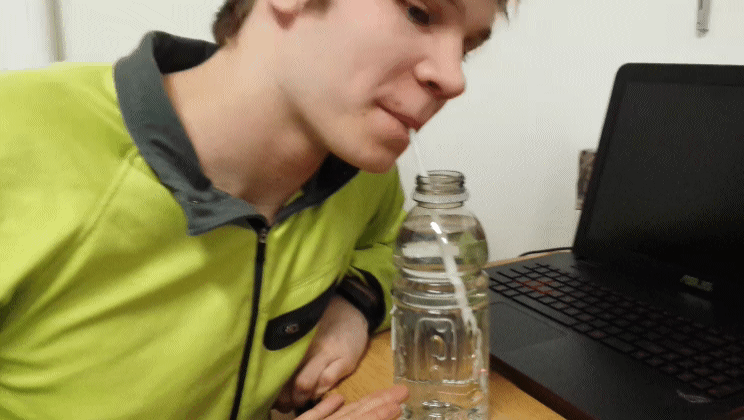Pressure can be thought of as the ratio of the force to the area on which the force is exerted (Knight).
What does this mean?
This means we can calculate pressure with an equation:
pressure = force/area
Using this pressure equation we can calculate force by finding areas and pressures. The average radius of a straw is .0625 inches. Therefore the area of a straw hole is pi/256 in.^2. Depending on the different pressures exerted, a person can generate different forces.
How does pressure affect a straw?
Straws work because of an imbalance in pressures. On earth, there is atmospheric pressure acting on everything. Atmospheric pressure at sea level is 14.7 psi. When a person sucks on the end of their straw, when it's in a drink, they reduce the atmospheric pressure in the straw at their mouth end while the atmospheric pressure acting on the liquid remains constant. This imbalance in pressures causes the water to be pushed upwards towards the persons mouth (Knight).

It is really that simple?
It is a little more complicated than it seems for exact calculations regarding fluids. In real word situations a lot of factors go into fluid dynamics, such as: viscosity of the liquid, hydrostatic pressure, and other factors (Knight). For this site we will ignore such limiting factors for the sake of simplicity.